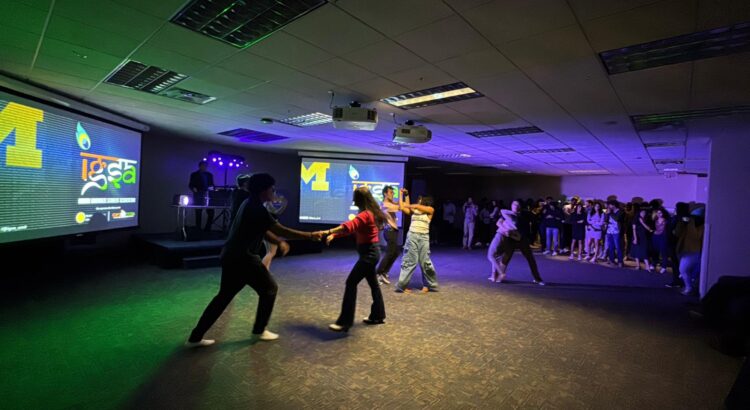Earlier this week, the University of Michigan-Dearborn campus came alive with the sounds of brass horns and swing beats, as Swing Dearborn hosted “Dance Night” with its own performances. What I witnessed was a vibrant celebration of dance, led by Swing Dearborn Vice-President Gabriel Fritz and while I did not know what to expect walking in the room, I walked out with my heart filled with appreciation.
The performances were split into four sets, each offering a different flavor of swing dance. The first routine opened with a classic Jitterbug, with Fritz leading the group. From the very first beat, I was being told a story. His movements were crisp and full of energy, and the way he was able to connect both with us, the audience, and his partner, was enthralling. There was a joyful bounce in every step, and the chemistry in the air was palpable. The playful dips and spins were perfectly timed with the music, creating a visual feast that drew me in. The movements were a conversation.
The second set introduced the Lindy Hop, a faster, more intricate dance style. Here, you could really see what Fritz specialized in. His footwork was precise, and his command of rhythm was impeccable. He transitioned from one complex move to another and it all felt very effortless and smooth. His partner mirrored his energy, and together they created a dynamic performance full of bold aerials and impressive lifts. It reminded me of the sheer physicality required for this style of swing, and I found myself in awe of their stamina and grace.
By the third performance, the mood shifted to something slower and more intimate, with a sultry blues number. The fluidity of his movements during the slower tempo was mesmerizing, and it showed me a different side of swing.—one that’s more about connection and subtlety. This performance felt personal, as if I was ”people watching” the dancers as they communicated with each other through their dance.
The final set was a group performance, featuring both experienced dancers and newcomers and although the ensemble was slightly less polished, it added to the charm of Swing Dearborn. It reminded me how swing was about having fun, rather than it being perfect all the time. I was surrounded by laughter, missed steps, and joyful recovery. Watching everyone be so immersed in the moment was beautiful.
After the performances, the audience was invited to join a 15-minute hands-on lesson and joining them is one of the best decisions I made that night. I thoroughly enjoyed the end of it all. Overall, the event showcased not just the technical brilliance of swing dance but also its capacity to connect people and spread joy. Whether you were an experienced dancer or stepping onto the floor for the first time, the energy of the evening was contagious, leaving everyone with a spring in their step.








